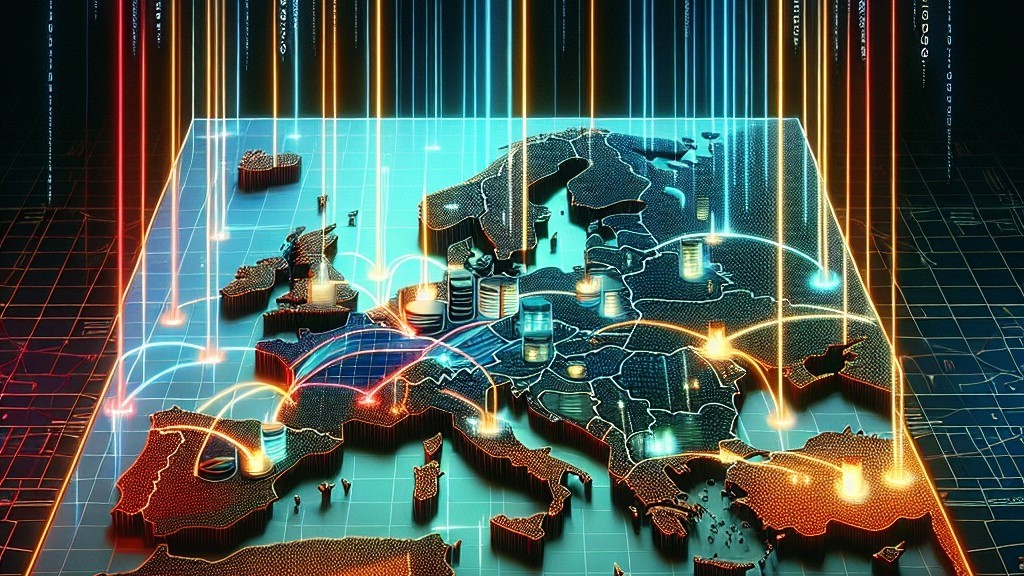It is a web of glass threads lying on the seabed. Twice, in starkly different seas, those threads were cut.

Two *subsea cables** in the Baltic Sea were cut within hours of one another in November 2024, cutting capacity across Finland, Lithuania, Sweden, and Germany.
In *September 2025**, multiple systems in the Red Sea, one of the world’s busiest internet corridors, were damaged and services were decimated across Europe, the Middle East, and Asia.
Each event had its own cause, but the net effect for users, enterprises, and cloud providers was the same: latency spikes, rerouting stress, an unpleasant lesson that our digital lives rely on a handful of physical chokepoints.
## The myth of infinite bandwidth
It is easy to assume “the cloud” will just absorb disruptions. Microsoft and AWS do have very good redundancy, and traffic was rerouted. But physics can’t be abstracted away:
*Latency increases** when traffic takes the bypass thousands of kilometers.
*Throughput decreases** when alternative routes inherit workloads.
*Resilience shrinks** when other cables in the same geography break down.
For latency-sensitive services — trading platforms, multiplayer gaming, video collaboration — the difference between 20 ms and 150 ms is the difference between usable and unusable. Because compliance-heavy workloads must reroute into areas with unknown jurisdictions, this carries very different risks of its own.
Regional compute is the antidote
The lesson is that if enterprises don’t want to expose themselves to chokepoints, regional compute capacity will have to be closer to both users and data sources. Regional doesn’t just mean “they’re all on the same continent.” And those operations must remain so they can continue if a submarine cable was cut and important international routes were taken offline. Regional compute operates in three aspects:
1. Continuity of performance – Maintain fast and stable mission-critical applications when cross-ocean fault paths are broken.
2. Risk diversification – Eliminate dependence on a single corridor — Red Sea, Baltic Sea, English Channel, etc.
3. Regulatory alignment – For some jurisdictions, including the EU, managing data within borders deals with sovereignty requirements as well.
## Europe as a case study—sovereignty through resilience
Europe’s movement for “digital sovereignty” (see NIS2, the EU Data Boundary, AWS’ European Sovereign Cloud…) is frequently presented in terms of compliance and control. But the cable incidents illustrate a more common principle: keeping capacity local is a resilience measure first, a regulatory checkbox second.
If you’re working inside the EU, sovereignty is one factor. If in Asia, the reasoning is similar — no need to rely on Red Sea transit. In North America, resilience might look like investing in a variety of east–west terrestrial routes to protect against coastal chokepoints.
A global problem with regional solutions
Route disruptions, by natural catastrophes, ship anchors, or even deliberate sabotage, have struck the Atlantic, Pacific, and Indian oceans. Every geography has its weak spots. That’s why international organizations are now more and more wondering: Where can we compute if the corridor collapses?
The answer frequently isn’t another distant hyperscale region. It’s:
*Regional data centers** embedded in terrestrial backbones.
*Local edge nodes** for caching and API traffic.
*Cross-border clusters** of real route diversity, not just carrier diversity.
## Building for the next cut
Here’s what CIOs, CTOs, and infrastructure leaders can do:
1. Map your exposure. Do you know which subsea corridors are mostly under your workload? Most organizations don’t. Ask for path transparency from your providers.
2. Design for “cable cut mode.” Envision what happens if the Baltic or Red Sea corridor goes dark. Test failover, measure latency, and revise the architecture accordingly.
3. Invest regionally, fail over regionally. Don’t just copy and paste data cross-sea. Build failover in your own core market when possible.
4. Contract for resilience. Diversity in routes, repair-time commitments, regional availability — build these into your SLAs.
5. Frame it as business continuity. This is not only a network ops situation, it’s a boardroom problem. One day of degraded service can exceed the cost of additional regional capacity.
Beyond sovereignty
Yes, sovereignty rules in Europe are a push factor. But sovereignty alone doesn’t explain why a fintech in Singapore, a SaaS in Toronto, or a hospital network in Nairobi would care about regional compute. They should care because cables are fragile, chokepoints are real, and physics doesn’t negotiate.
The bottom line
Last year’s cable cuts weren’t necessarily catastrophic. They were warnings. And the world’s dependence on a few narrow subsea corridors is increasing, not decreasing. As AI, streaming, and cloud adoption accelerate, the stakes rise.
Regional compute isn’t all about sovereignty. It’s about resilience. The organizations that internalize that lesson right now—before the next snap—will be the ones that stay fast, compliant, and reliable while others grind to a halt.
Subscribe & Share now if you are building, operating, and investing in the digital infrastructure of tomorrow.
#SubseaCables #CableCuts #DigitalResilience #RegionalCompute #DataCenters #EdgeComputing #NetworkResilience #CloudInfrastructure #DigitalSovereignty #Latency #BusinessContinuity #NIS2 #CloudComputing #InfrastructureSecurity #DataSovereignty #Connectivity #CriticalInfrastructure #CloudStrategy #TechLeadership #DigitalTransformation
https://www.linkedin.com/pulse/when-cable-snaps-why-regional-compute-cant-andris-gailitis-we9sf

